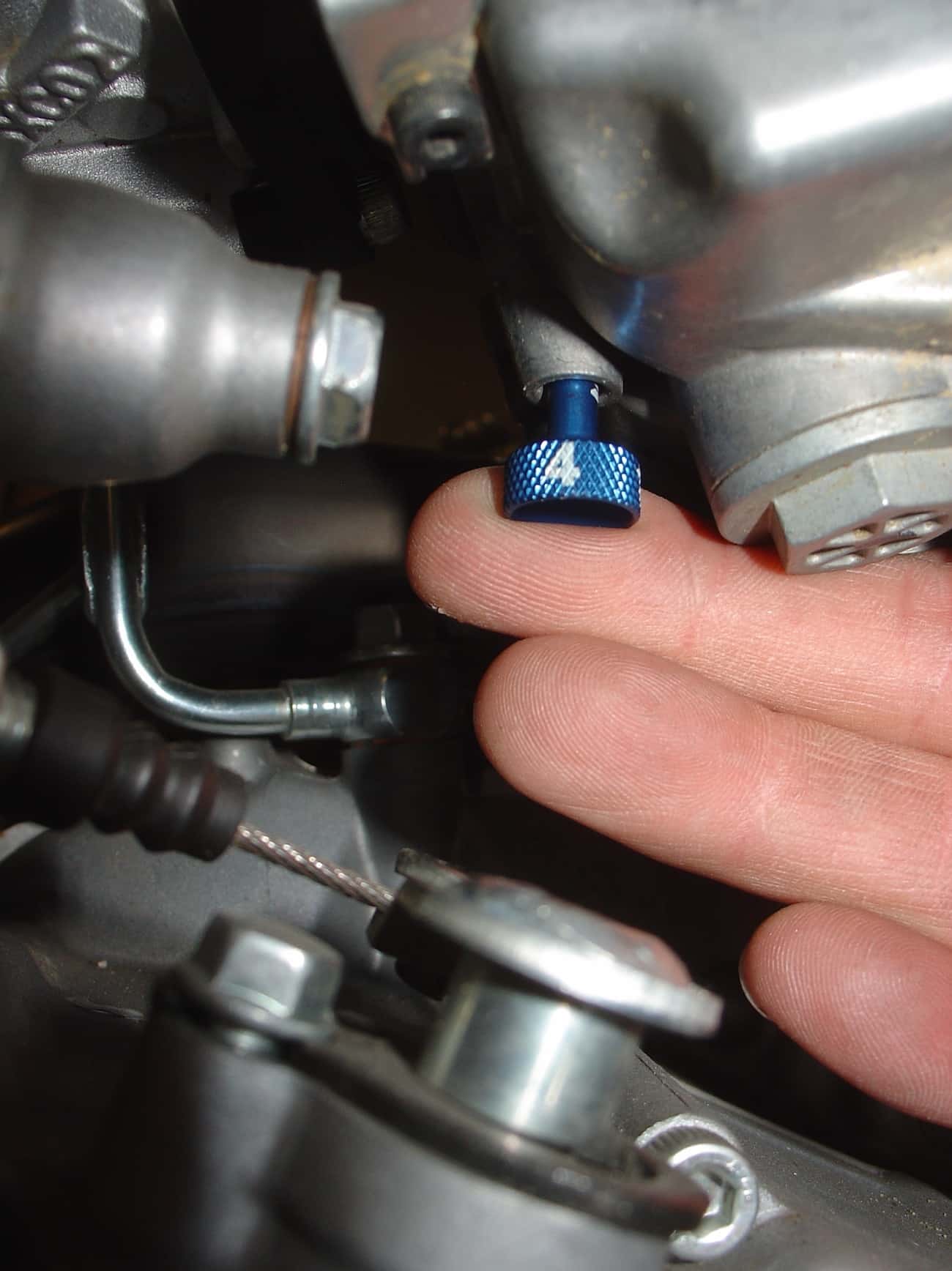ASK THE MXPERTS: ANCIENT ART OF FUEL-SCREW KNOW-HOW
Click on image to enlarge
 Before fuel injection became the tour de force of motorcycle induction, the ability to turn this screw was paramount of success.
Before fuel injection became the tour de force of motorcycle induction, the ability to turn this screw was paramount of success.
Dear MXA,
I own a 2013 Yamaha YZ250F. It is a good bike, but its real claim to fame is that it was the last carbureted 250cc four-stroke. I have some jetting issues, and a guy said that there is something called a fuel screw on the carb that will allow me to make the bike richer or leaner. Where is it, and how do I adjust it?
The fuel screw bleeds down how much fuel mixes with the air coming from the carb’s bypass hole. Do not mistake it for a two-stroke’s air screw. The air screw is on the side of the carburetor and meters the amount of air that makes it to the pilot-jet nozzle. A fuel screw is located underneath the float bowl and meters the amount of fuel that makes it to the carb’s main body. Four-strokes use fuel screws instead of air screws because they don’t have enough low-speed vacuum for an air screw. At low rpm, a four-stroke creates less engine vacuum than a two-stroke. It is the vacuum created by the engine that sucks fuel out of the float bowl and into the engine. Thanks to the fuel screw, a four-stroke is able to start easier and run cleanly at its very low-rpm idle speed by getting fuel via the fuel screw.
Before you touch the fuel-mixture screw, you must first warm up the engine and then bring it to a fast idle. As a rule of thumb, 1800 rpm will do. With the engine at a steady idle, turn the fuel screw in, which lessens the amount of fuel. Continue tightening the screw until the engine rpm drops (and nearly dies). Now, slowly turn the screw back out, which increases the amount of fuel. You will hear the engine rpm begin to speed up and the exhaust note will become crisper.
Stop turning the fuel-mixture screw at the exact moment when the engine hits peak rpm. Peak rpm is when the engine runs the cleanest and fastest. If you keep turning the screw out, the rpm will stay up but the exhaust note will become dull, flat and lumpy. If you have any doubts about the best setting, turn the fuel screw back in until the rpm slows down, and turn it back out again until it speeds up.
There is no right number of turns, only wrong numbers. Typically, the fuel screw can be set anywhere from 1/2 to two turns out. If you have to turn it more than two turns out before it reaches peak rpm, it might indicate that the pilot jet is too small (lean). Try the next larger pilot and retest the fuel-mixture adjustment. Conversely, if peak rpm is reached before you turn the fuel-mixture screw out a half turn, it could mean that the pilot jet is too rich. Try the next smaller size.
Sadly, you will need to check your fuel screw any time the temperature changes—twice a day if it is cool and overcast during practice, and bright and sunny for the first moto. Changes in temperature, elevation and humidity will require fuel-screw adjustments. To avoid having to squeeze a tiny screwdriver up under the Keihin carb, you can buy an aftermarket fuel screw that sticks below the float bowl and can be turned by hand.
If you have a technical, political, emotion or historical question you want answered, send it to [email protected]





Comments are closed.